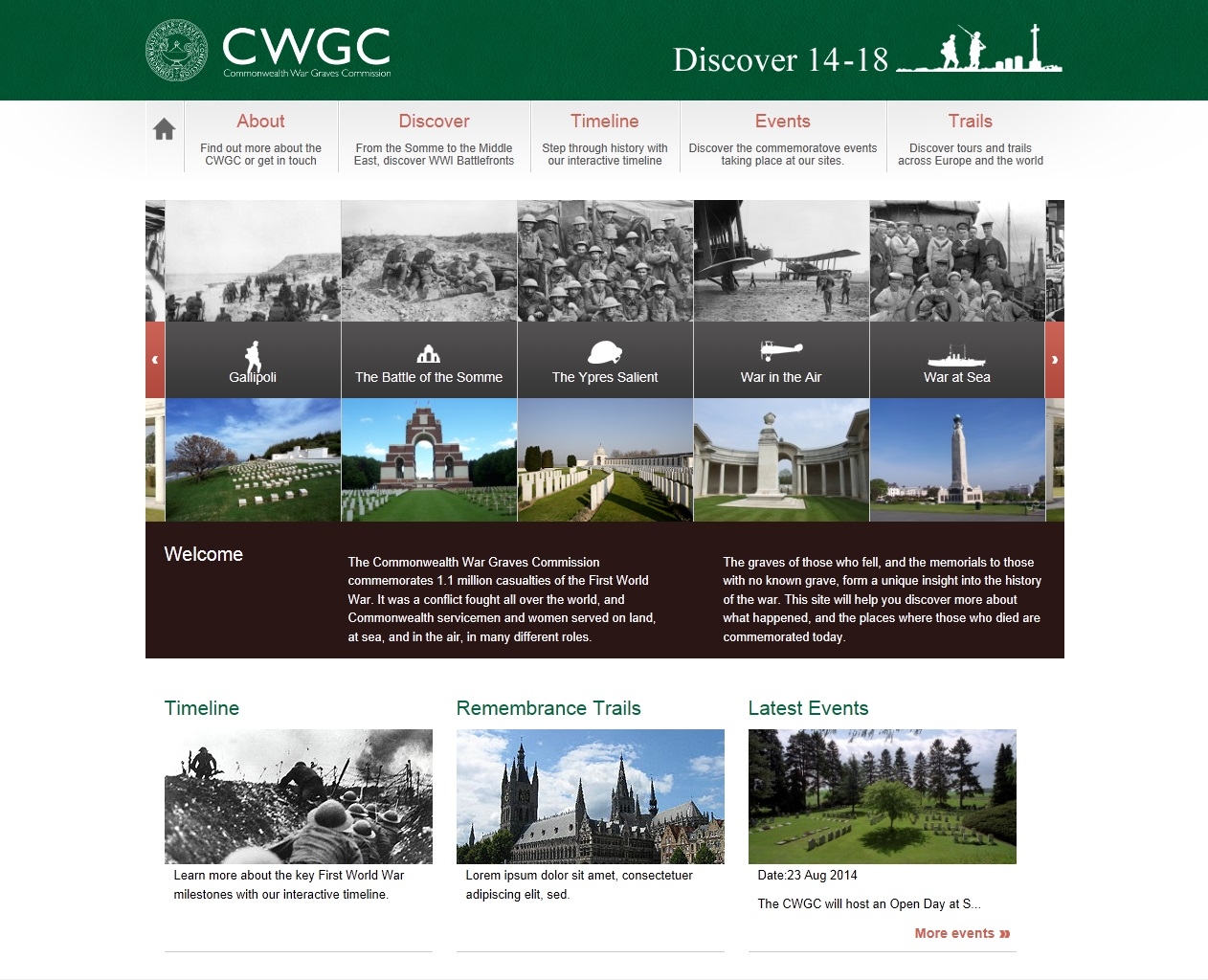The Commonwealth War Graves Commission has launched new online resources with the aim of making it easier than ever before to locate and visit memorials of relatives killed in the First World War.
Hundreds of thousands of historical military records are now available for the first time on the CWGC’s website, providing an insight into the painstaking work carried out in the years after the war to identify and commemorate Commonwealth war dead.
A brand new microsite, Discover 14-18, has also been unveiled, outlining the major battles and key anniversaries, and suggestions for visiting the sites associated with them.
Unprecedented interest
Dr Glyn Prysor, the CWGC’s Historian, says the Centenary has generated unprecedented interest.
But he told Centenary News that the anniversary would be about discovery as much as remembrance for many people: “Discover 14-18 will highlight a selection of our cemeteries and memorials, and explain how they relate to battles, campaigns and aspects of the wartime experience in a straightforward and accessible way.
“We want to help people understand where they are, how they were created, and be inspired to find out more.
“As the site develops over the coming Centenary period, we hope to encourage new generations of pilgrims to visit, to learn and to reflect.”
In a five-year project leading up to the Centenary, the CWGC has scanned more than 300,000 working documents relating to members of Commonwealth forces who died in service during the First World War.
The papers, many now in a physically delicate state, provide a unique insight into the work of commemoration carried out by the British Army and the Imperial War Graves Commission (as it was then known) once the war was over.
Handwritten corrections show how information was updated as unknown soldiers were identified. There are also details of exhumations and reburials, as well as headstone inscriptions, next-of-kin and grave registrations
Andrew Fetherston, CWGC Archivist and Records Manager, describes the documents as a window into the past: “it is fascinating to see the typed and handwritten lists, the corrections and notes as they strived for accuracy.
“For the families of those we commemorate, these records give a snapshot into the processes by which their relatives would have been identified and buried, or commemorated on a memorial, and give a direct link back to a time in the immediate aftermath of the war.”
Barely half of the Western Front’s dead had been given a proper burial in designated military cemeteries when the Armistice ended the First World War in November 1918.
Special army units began to clear the battlefields in earnest early in 1919, meticulously searching for anything that could identify fallen comrades.
Tens of thousands of soldiers’ bodies had been recovered and reburied by the time the Graves Concentration Units were disbanded in the spring of 1920.
But even today, the remains of as many as 20 or 30 First World War soldiers can be found on the old Western Front each year.
The Discover 14-18 microsite can be visited here.
 Source: Commonwealth War Graves Commission
Source: Commonwealth War Graves Commission
Images courtesy of the Commonwealth War Graves Commission
Posted by: Peter Alhadeff, Centenary News
